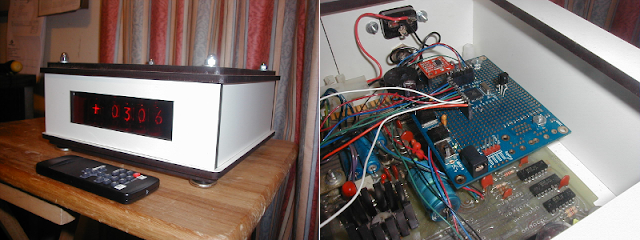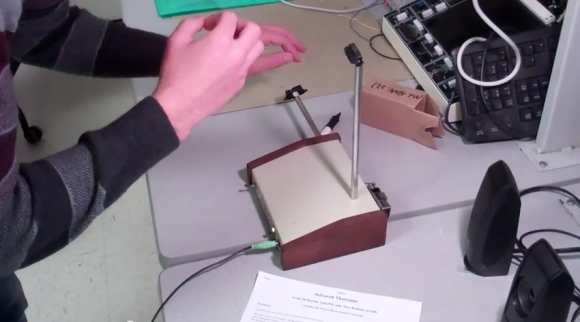A wine bottling company in New Zealand got in touch with [Boz] to solve a problem. They needed a way to automatically determine if a wine bottle was filled or not. What he came up with is a very simple yet very effective fill level sensor that can scan thousands of bottles an hour.
There were a few design decisions that went into the construction of this wine bottle sensor. [Boz] could have used a VGA camera sensor, but given the speed of the bottling line (half a meter per second), pushing all those pixels to a computer and doing real-time image analysis would be difficult. [Boz] settled on a much simpler solution – a 1×128 linear CCD analog image sensor. With a PIC microcontroller, this allows the device to check multiple bottles per second, calculate if the bottle is full or not (or overfilled), and send a ‘pass’ or ‘reject’ signal to the rest of the line.
The rest of the assembly is fairly straightforward with an LED backlight providing the illumination for the CCD and a Bluetooth transmitter for checking out the machine’s settings. On the bottling line, the device has 99% accuracy for both red wines in dark bottles and whites in green bottles. You can take a gander of this device in action on a New Zealand bottling line below.
There were a few design decisions that went into the construction of this wine bottle sensor. [Boz] could have used a VGA camera sensor, but given the speed of the bottling line (half a meter per second), pushing all those pixels to a computer and doing real-time image analysis would be difficult. [Boz] settled on a much simpler solution – a 1×128 linear CCD analog image sensor. With a PIC microcontroller, this allows the device to check multiple bottles per second, calculate if the bottle is full or not (or overfilled), and send a ‘pass’ or ‘reject’ signal to the rest of the line.
The rest of the assembly is fairly straightforward with an LED backlight providing the illumination for the CCD and a Bluetooth transmitter for checking out the machine’s settings. On the bottling line, the device has 99% accuracy for both red wines in dark bottles and whites in green bottles. You can take a gander of this device in action on a New Zealand bottling line below.





